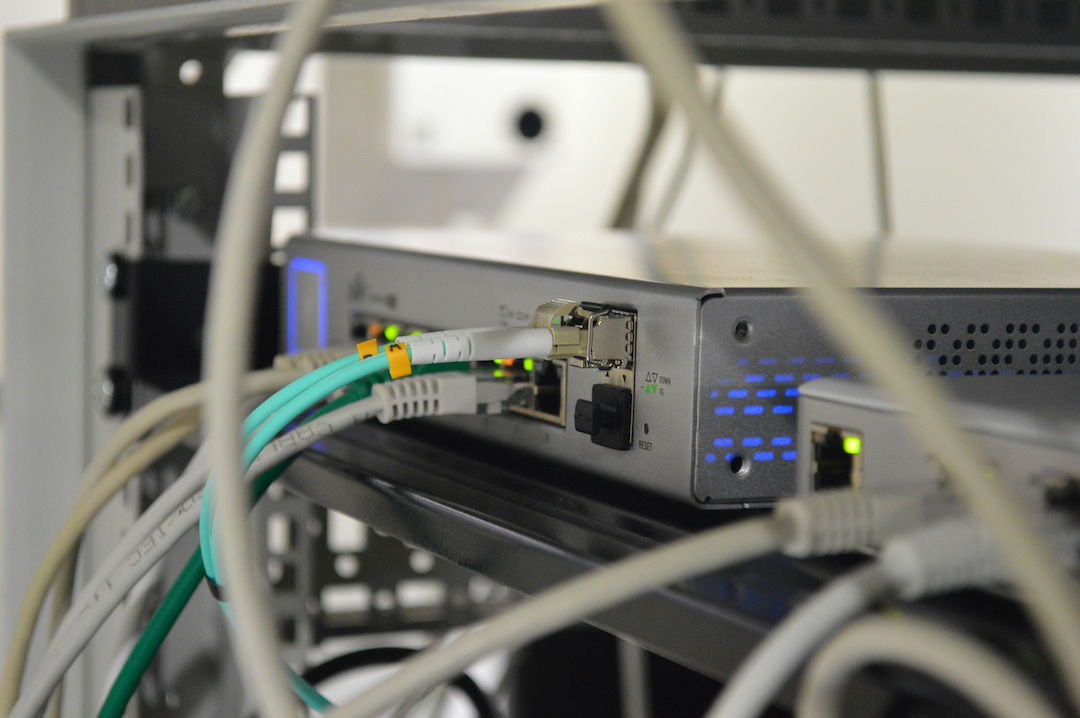Table of Contents
Introduction
Nowadays networks have evolved rapidly in the last recent years, and traditional methods of overcoming the changes in the networks may no longer be sufficient to meet the demands of today’s complex and agile networks.
Network digital twins, integrated with Continuous Integration/Continuous Deployment CI/CD pipelines, provide a powerful solution for network change management and improving overall network stability.
In this blog series, I will show you how to get started to define the network digital twin and combine it with pipelining technologies.
But first, I will start with the theory of the benefits of integrating network digital twins into CI/CD pipelines and explore use cases where this approach can make a significant impact on network management.
I also talked on Cisco Live 2023 in Amsterdam about that topic. Make sure to check that out.
What is a Digital Twin?
Digital twin technology has been increasingly adopted across various industries due to its potential to optimize processes, improve overall efficiency and productivity. Following there are some examples of where digital twins play a major role:

Manufacturing: Digital twins are used to modeling production lines, optimize manufacturing processes, predict equipment failures, and improve overall productivity. They can also be employed to simulate new products and analyze their performance under various conditions.
Energy: In the energy sector, digital twins are used to optimizing the performance of power plants, wind turbines, and solar power systems. They can help predict maintenance requirements, maximize efficiency and minimize downtime.
Healthcare: Digital twins can be used to simulate patient-specific medical conditions and treatments, enabling personalized healthcare and improving patient outcomes. They can also model hospital workflows, optimize resource allocation, and enhance overall patient care.
Supply Chain and Logistics: Digital twins can help optimize warehouse operations, transportation routes, and inventory management, leading to improved efficiency, reduced costs, and better overall supply chain performance.
Automotive: In the automotive industry, digital twins are used to simulating vehicle components, systems, and overall performance, enabling faster design iterations and improved product development.
Aerospace: Digital twins can help aerospace companies optimize aircraft design and maintenance schedules, and predict component failures, ensuring safer and more efficient operations.
Construction: In the construction industry, digital twins can be used to model buildings and infrastructure projects, enabling better design, and construction planning.

These are just a few examples of the many use cases of digital twins across different industries. As digital twin technology continues to advance, its adoption and impact are expected to grow further.
Keep in mind: The aim of a digital twin is to cover the entire lifecycle of a product from design, development, production, and use!
What is a Network Digital Twin?
Using a network digital twin can offer numerous benefits for your business involved in managing and optimizing complex network environments.
Below are some key reasons why you should consider integrating the network digital twin approach (just to name a few):
- Enhanced education: Providing a safe environment to understand and experiment with network devices
- Improved efficiency: Allows testing and optimization of configurations before implementation and failure.
- Change validation: Predict potential failures on planned changes and implementation.
- Faster innovation: Facilitates experimentation with new technologies and architectures.
- Troubleshooting capabilities: Replicate issues in a safe environment.
- Increased resilience: Simulates scenarios to identify and address vulnerabilities.

How to replicate a Network Digital Twin?
One way to replicate a network digital twin is by using simulation software. Consider the following tips :
Pick a tool that suits your needs and has the necessary features to create a digital twin of your network, such as Cisco Modeling Labs as an example (more on that in the second part).

Collect data about your existing network, including devices, connections, protocols and configurations. This information will be used to build the digital twin.
Using the network simulation software to create a model of your network that represents its architecture. Import or manually input the data gathered to ensure the model matches your actual network or a subset of it.
Run various tests and scenarios to verify the model’s configuration and adjust if necessary.
With the validated digital twin, run automated test cases to test different network states like protocol details (BGP,OSPF etc.) and analyze the data plane. This will help you to optimize your network and proactively address any problems.
Apply the insights gained from the simulations to make informed decisions about network improvements, upgrades, and configuration changes.
Regularly update the network digital twin to reflect changes in the actual network. This ensures that the digital twin remains an accurate representation of your network for future simulations and optimizations.
Collaborate among different teams by sharing the network digital twin(s). This enhances better communication and coordination in network management tasks.
Remember that creating and maintaining a network digital twin requires:
❗️time
❗️resources
❗️expertise
How to use a Digital Twin inside a CI/CD pipeline?
Integrating a network digital twin within a CI/CD pipeline can help network changes, improve network reliability, and ensure that any changes are automatically tested and validated. To implement a network digital twin in a CI/CD pipeline, follow these tips:

Store your network configurations, device settings, and digital twin models in a version control system like Git for example. This allows you to track changes and maintain a history of network configurations.
Continuous Integration: Set up a continuous integration process that triggers whenever there’s a change to network configurations or device settings.
Test validation: Ensure that your test environment includes simulations for various scenarios, such as configuration, protocols, and failure recovery. The tests should validate the changes against predefined criteria.
Continuous Deployment: If the tests are successful, proceed with deploying the changes to the actual network. This can be done manually or through automation.
Implementing a network digital twin within a CI/CD pipeline can be complex, and you’ll need to consider the specific needs and constraints. However, doing so can lead to a more efficient and resilient network change process.
Use cases for Network Digital Twins
By integrating network digital twins in CI/CD pipelines, data center operators can optimize network configuration changes during maintenance windows. This can lead to an improved reputation for the network team and we all don’t want to hear people blaming the network 😜
Digital twins can help identify security vulnerabilities and potential attack vectors within the network. By simulating various security scenarios, network folks can proactively implement security measures, ensuring a more robust and secure network.
- Network digital twins can be used to model disaster recovery scenarios, helping to prepare for potential network outages or data center failures. By incorporating these simulations in CI/CD pipelines, you can validate their disaster recovery strategies and ensure minimal downtime during unexpected events.
- When planning network expansion or upgrading existing infrastructure, digital twins can simulate the impact of these changes on the network.
Summary and next steps
The integration of network digital twins into CI/CD pipelines has the potential to change network management across various industries and use cases. By adopting this approach, you can improve collaboration, streamline change management, and enhance network reliability, leading to more efficient and resilient networks.
As digital twin technology continues to advance, we can expect to see even more innovative applications and benefits in network management as some vendors are already developing their ready-to-use software solutions.
The network digital twin has a lot of areas where it can help to optimize and bring agility into your networks.
To sum up, here are some areas where the network digital twin can help you:








In my next article, I will show you, how I built my network digital twin, integrated it into my pipeline and which toolset I have decided to use…



